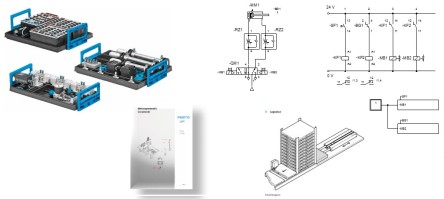
Course 1: Basics of electropneumatic controls
Electropneumatics is a drive technology that can be easily automated and is economical. It is the starting point of the learning path digitalization. The learning contents of electropneumatics are:
- Direct and indirect control
- 3/2- and 5/2-way solenoid valves
- Analyze circuits
- Electrical sensors for position and pressure
- Linkage controls
- With self-holding
- Pressure dependent
- Path-dependent
- With logic operations
- Troubleshooting in simple electropneumatic controls
- Economic considerations
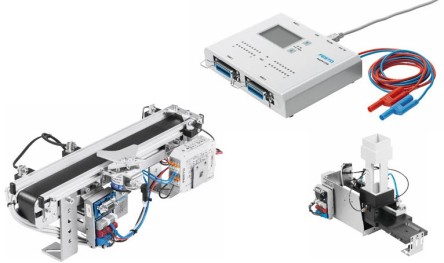
Course 2: Graphical programming GRAFCET
The development and simulation software FluidSIM® in combination with the interface EasyPort® and the MPS® module Band offers the ideal platform to develop and test sequence controls graphically with GRAFCET. The Belt module is equipped with a stopper. Using the example of material transport, all learning contents of graphical programming can be processed:
- Basics of electrical components (motor)
- Getting to know the conveyer module
- Control of the conveyer by FluidSIM® via EasyPort®.
- Explanation of the most important GRAFCET elements of the standard
- Operating modes
- Hierarchies
- Coarse-fine structures (macros)
- Creation of example GRAFCETs
- Sequence control with the help of GRAFCET
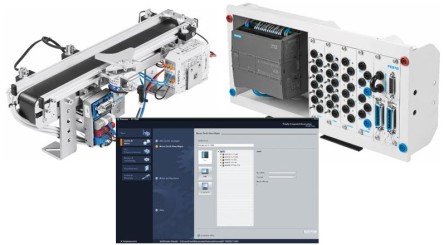
Course 3: Digital control
The module tape and the module stack magazine together form a simple feeding process. This process in combination with a LOGO or S7-1200 is a simple system on which basic training in programming small controllers can be done. Important topics are:
- Structure and function of a PLC
- Hardware configuration in the TIA Portal
- What are instance-capable blocks?
- Inputs, outputs and variables, as well as their naming and prefixes
- Graphical and textual programming languages
- Program development using a GRAFCET
- Basic logic functions and signal storage
- IEC timer and IEC counter
- Sequential controls
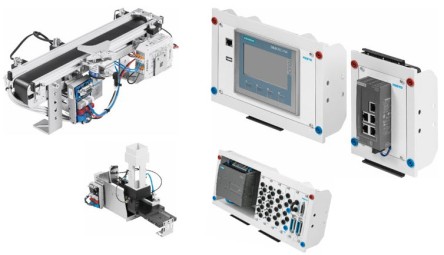
Course 4: Operating and monitoring
The dialog between the plant and the operating personnel should ensure the safe operation of the plant. With HMI (Human Machine Interfaces) information can be transferred bidirectionally. The operator interface is freely programmable. In conjunction with PLC programming, this is an important building block on the way to an intelligent machine. The topics are:
- Getting to know HMI hardware
- Operating and monitoring with the help of the Siemens HMI touch panel TP400
- Projecting basic objects, elements, system functions and controls in WINCC (or in TIA Portal) with the help of step-by-step instructions
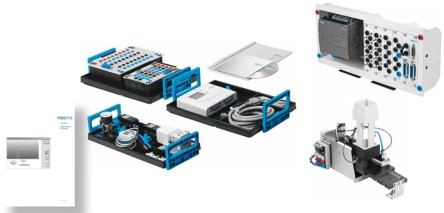
Course 5: Analog value processing
Sensors monitor pressures, volume flows, paths and other data. These data provide information, for example, on energy requirements and cycle times. In addition to binary sensor signals, analog signals must also be converted and processed. The following points are important here:
- Sensors - pressure and flow sensors
- Characteristic curve recording / hysteresis
- Analog control (proportional technology)
- 2-point control (energy station)
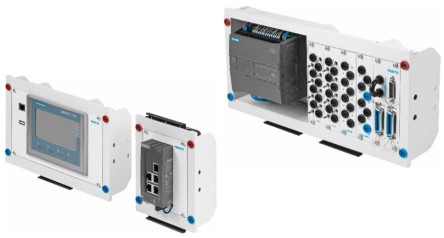
Course 6: Networks
The network is the prerequisite for the digital transmission of data inside and outside a machine as well as for the connection to the Internet. Basic knowledge of networking is an important part of training in all professions:
- How Ethernet networks work (switching)
- Addressing methods (Ethernet and IP)
- Creating and setting up networks (connecting HMI and PLC)
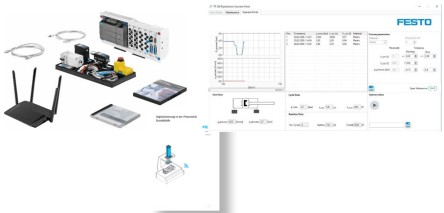
Course 7: Intelligent maintenance
The continuous evaluation of sensor data and their assessment via tolerance fields enables the detection of leakages, imminent assembly failures and localizes defects. This information and advice on maintenance and troubleshooting can be automatically transmitted to computers or mobile devices. The following learning is important for this:
- Collecting production data such as pressure, flow, cycle time
- Deriving information from the collected data
- Targeted maintenance in the sense of predictive maintenance
- Process monitoring based on web services
- Receiving and responding to push messages